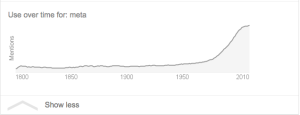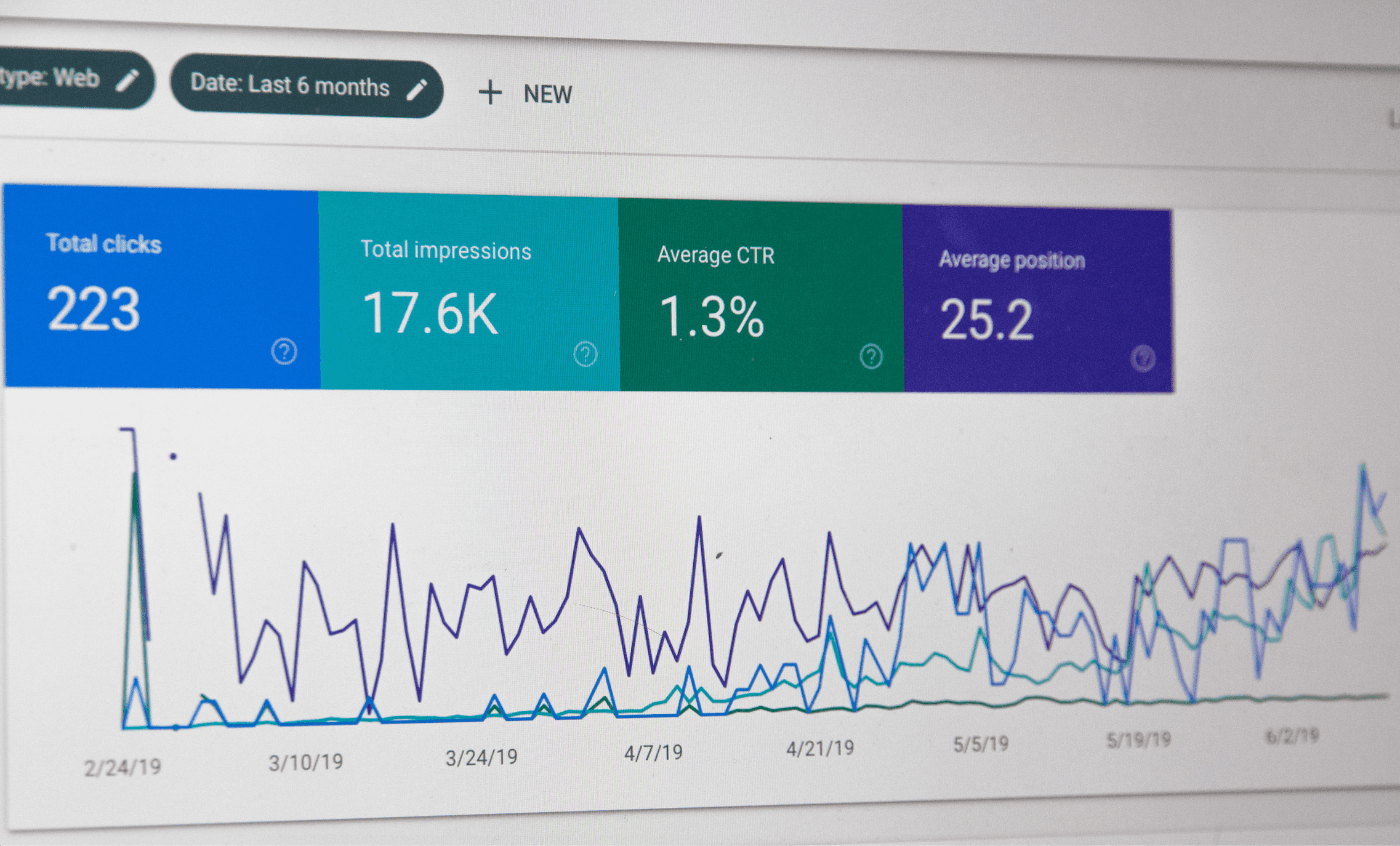Grow Your Website Traffic 456% by Being More Meta

Meta has turned into a catch-all to describe the self-conscious or the self-referential. Now, it’s a strange word thrown around in your favorite yuppie locations; however, before this, meta found its niche in the web development world.
I tell this story because we were recently talking to someone about meta descriptions and they were confused. What is a meta tag and description and why do I need one?
Meta is actually a Greek prefix meaning self or beyond. When people use meta, like the girls in the coffee shop, it normally means an extension of oneself. In web development, meta tags are extensions of your website. This extension is normally a short description of the contents of the website. You actually read meta descriptions all day.

The use of meta over the course of time! There is a lot of meta going on today.
People think that the meta description helps your rank higher with search algorithms. This is a myth. People who believe this will try and incorrectly cram keywords into the meta description. However, meta descriptions can play a key roll in page rank and should be well thought-out.
Meta descriptions help with the click through rate, one of the key factors of search algorithms. The more people are clicking on your link then Google remembers this and translates it to a better performing and more liked page. So you need to write meta descriptions not for bots but for humans.
So writing click worthy meta descriptions makes sure that your visitors are clicking on the awesome content that you are making.
How To Write Killer Meta Descriptions:
1. Call To Actions:
Call to actions are strong words that provide motivation to come to your website. Learn, discover, grab, start are all strong call to action words. If the person has already read the SEO title of your website and are taking the time to read the rest of the meta description then you need to give them good reason to come to your website.

Find is a good call to action. Additionally, the word sale is bolded because it was used in the search query.
2. Be Transparent:
Do you know what really hurts your website? The bounce rate. The bounce rate is how often someone comes to your website and then bounces off of it because the description on the outside did not match what they actually received on the inside. You do not want to increase the bounce rate of your website and deceive the people who are discovering your content for the first time. So when you or whoever is writing the meta description of your website make sure that you are not advertising flowers, but selling clowns. Perhaps not the best example, but you know what I mean: don’t be a trickster.

Don’t scare away your costumers.
3. Keep it Simple:
Google does not always show your full meta description. There is one school of thought that thinks it is better to have your descriptions over flow making the searcher want more. I fully disagree with this. In my experience, the best meta descriptions tell the reader exactly what they are going to get in the easiest to digest format. You do not want to have people guessing if this is right for them because they will guess themselves to the next website in the list and never return to yours.
4. Keywords:
Previously, I stated that you do not want to use a lot of keywords, but you still need them. Search engines often bold the words that are associated with search query. If you have a lot of bolded words in the title and then in the meta description then people are more likely to believe that this content is relevant to them.
5. Stand Out:
People use Google all day. You have personally read thousands of meta descriptions. Subconsciously you know when they are average versus great and makes you stop and think. In order to increase those click through rates you need to learn to be brave and take the risk. Have some fun with your meta descriptions and see how much it can change your traffic.
Meta is becoming even more relevant. Social networks use meta descriptions when someone shares a link. Also, meta descriptions appear when sending links in texts now too!
We recently ran a study on meta descriptions on one blog post. The result were absolutely outstanding. We A/B tested two different meta descriptions for a week at a time. One of the meta descriptions increased the traffic to the blog by 456% percent. That is crazy! People think that meta descriptions are dead or a waste of time, but I am here to say otherwise.
People hate clicking on things that they do not want to read. Do not spend hours of precious time making killer content only to blow it on the meta descriptions. The culmination of little things always has drastic effects on the outcome. Be meticulous about every part of what you are doing, and you will reap the rewards.
Share this article because you are an awesome person!








